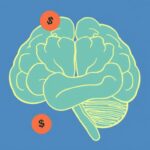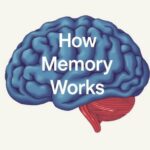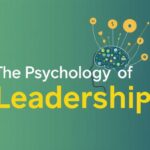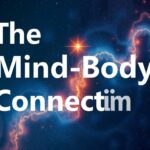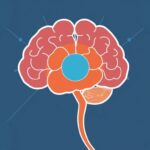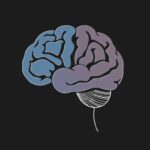Lucid dreaming is a fascinating phenomenon where the dreamer becomes aware that they are dreaming while still within the dream. Imagine flying through the sky, exploring surreal worlds, or solving problems—all while knowing that none of it is real. This astounding experience opens up a unique intersection between sleep science, consciousness, and even creativity. But how does lucid dreaming work? What does science say about the mechanics behind it? And could mastering this skill have practical benefits beyond just an unforgettable night’s adventure? In this article, we will embark on a journey through the science of lucid dreaming, uncovering what it is, how it happens, why it matters, and how you too might start to experience your own conscious dreams.
What Is Lucid Dreaming?
At its simplest, lucid dreaming happens when you realize that you are dreaming while still asleep. This self-awareness allows some people to take control of their dreams, choosing what happens next or simply observing with a sharp, conscious mind. While many people experience lucid moments during sleep, for others, it may be a rare or elusive state.
The term “lucid” comes from the Latin word for “light” or “clear,” reflecting the clarity of consciousness that distinguishes these dreams from ordinary ones. Lucid dreaming offers a unique blend of waking awareness and dreamlike imagery, creating a space where the mind operates in a different, often more fluid and imaginative, way.
The Science Behind Lucid Dreaming

Understanding the science of lucid dreaming requires a look at the brain’s activity during sleep. Sleep stages alternate in cycles, with REM (rapid eye movement) sleep being when most vivid dreams occur. Normal dreams tend to be immersive but passive experiences with little awareness of the dreaming state.
What makes lucid dreaming special is the activation of certain brain areas responsible for self-awareness and executive functions, such as the prefrontal cortex. This region is usually less active during REM sleep but appears to “wake up” during lucid dreams, allowing the dreamer to recognize that they are in a dream.
Brain Activity in Lucid Dreaming
Scientific studies employing EEG (electroencephalography) and fMRI (functional magnetic resonance imaging) have shed light on what happens inside the brain during lucid dreams. Researchers have recorded increased gamma wave activity (high-frequency brainwaves linked to conscious awareness and cognitive functions) in the prefrontal cortex of lucid dreamers relative to non-lucid dreamers.
This is a crucial discovery because it shows that the brain can have self-reflective thoughts even during REM sleep, breaking the usual pattern of unconscious dreaming. The ability to toggle between a sleeping and conscious mode opens doors for possible therapeutic and creative applications.
How Do People Induce Lucid Dreams?
While some people naturally experience lucid dreams from time to time, many actively work to induce them using various techniques. These methods aim to increase self-awareness or trigger cognitive signals that alert the dreamer they’re dreaming.
Here is a list of some popular lucid dreaming induction techniques:
- Reality Testing: Regularly checking your environment and asking, “Am I dreaming?” during waking hours to form a habit that carries over into dreams.
- Mnemonic Induction of Lucid Dreams (MILD): Repeating a phrase or intention before sleep, such as “I will know I’m dreaming.”
- Wake Back to Bed (WBTB): Waking up after 4–6 hours of sleep and staying awake briefly before returning to sleep, which increases the chances of entering REM sleep consciously.
- Wake-Initiated Lucid Dream (WILD): Maintaining awareness while the body falls asleep, directly entering a lucid dream state.
Many lucid dreamers combine these methods to maximize their chances of success. Keeping a dream journal is also a common practice, improving dream recall and reinforcing the connection between waking and dreaming minds.
Why Does Lucid Dreaming Matter?
It might seem like lucid dreaming is just an entertaining skill for escapists or creative minds, but researchers have identified several promising uses. From psychological therapies to cognitive training, lucid dreaming is revealing itself to be much more than mere fantasy.
Therapeutic Benefits
One area where lucid dreaming shows promise is in treating nightmares and trauma. For people suffering from PTSD or recurring nightmares, learning to recognize when they are dreaming can empower them to change the narrative and reduce anxiety. Rather than being passive victims of frightening dreams, lucid dreamers can take control and transform the dream content.
Moreover, lucid dreaming has potential applications in overcoming phobias and anxiety by creating safe environments to confront fears. The conscious nature of these dreams can facilitate emotional processing and healing.
Enhancing Creativity and Problem-Solving
Famous creators like Salvador Dalí and Marie Curie reportedly used dreams to inspire their work. Lucid dreaming offers a playground for creativity where impossible ideas can be explored with conscious intent. Artists, writers, and inventors can engage with their dream landscapes more purposefully, generating novel concepts or overcoming creative blocks.
Beyond art, some scientists and mathematicians have found lucid dreams helpful in processing complex problems. It’s like having a limitless laboratory in the mind, free from physical constraints and logical rules.
Improving Skills and Learning
Interestingly, studies have suggested that practicing skills or rehearsing tasks in lucid dreams can enhance real-life performance. This phenomenon is somewhat analogous to mental rehearsal techniques often used by athletes. Because the brain activates motor regions during vivid dreaming, ingraining actions or behaviors in a lucid dream could transfer benefits upon waking.
Common Myths and Misconceptions About Lucid Dreaming

Despite growing scientific interest, many myths surround lucid dreaming. Here’s a table addressing some common misconceptions and the facts behind them:
| Myth | Reality |
|---|---|
| Lucid dreaming is dangerous and causes sleep disorders. | Scientific evidence shows lucid dreaming is generally safe. In fact, it often promotes better dream recall and mindfulness without harmful effects. |
| You can control every aspect of your lucid dreams. | Control varies widely. Some people can shape their dreams completely, while others only gain varying degrees of awareness or influence over the dream. |
| Lucid dreaming is rare and impossible to learn. | With practice and proper techniques, most people can experience lucid dreams at least occasionally. |
| Lucid dreams feel less real or vivid than regular dreams. | Lucid dreams can be as vivid or even more intense than normal dreams, often with heightened clarity and awareness. |
Common Experiences and Challenges in Lucid Dreaming Practice

While lucid dreaming sounds exciting, it can come with its own set of hurdles. Some beginners report difficulties like:
- Difficulty maintaining lucidity: Many lucid dreams end shortly after gaining awareness because the dreamer wakes up or loses focus.
- Sleep disruption: Certain induction techniques, like WBTB, can interrupt your sleep cycles and affect rest quality if not managed carefully.
- False awakenings: These are dreams where you think you’ve woken up but are still dreaming, which can be confusing or unsettling.
- Overexcitement leading to waking up: The excitement of becoming lucid can sometimes cause abrupt awakening.
Developing good lucid dreaming skills involves patience, consistent practice, and a focus on relaxation and mindfulness. Like any skill, it improves with time and experience.
The Future of Lucid Dreaming Research
As technology progresses, new tools are emerging to explore and potentially enhance lucid dreaming. Wearable devices that monitor sleep stages and deliver subtle cues during REM sleep aim to increase the chances of becoming lucid without waking the dreamer.
Additionally, ongoing research seeks to understand how lucid dreaming intersects with consciousness studies, memory, and brain plasticity. There is much to learn about how this unique state could be harnessed for healing, creative breakthroughs, and even expanding human awareness.
Collaborations between neuroscientists, psychologists, and even philosophers are opening fresh perspectives on dreaming, consciousness, and what it means to be aware.
Summary of Key Points
| Aspect | Key Facts |
|---|---|
| Definition | Lucid dreaming is being aware you are dreaming while still in the dream. |
| Brain Activity | Increased prefrontal cortex activity and gamma waves during lucid dreams. |
| Induction Methods | Includes reality checks, MILD, WBTB, and WILD techniques. |
| Applications | Therapy, creativity, skill enhancement, and nightmare control. |
| Challenges | Maintaining lucidity, sleep disruption, and false awakenings. |
How to Get Started with Lucid Dreaming
If you’re curious to explore the world of lucid dreaming, here are some practical tips to begin your journey:
- Keep a Dream Journal: Write down your dreams immediately after waking to improve dream recall and pattern recognition.
- Practice Reality Checks: Frequently ask yourself during the day, “Am I dreaming?” and check your surroundings for signs (like reading text twice or looking at your hands).
- Set Clear Intentions: Before sleeping, tell yourself you will recognize when you are dreaming (MILD technique).
- Use Wake Back to Bed: Try waking after 5 hours of sleep, staying awake for 15-30 minutes, then returning to sleep with intention.
- Stay Calm When Lucid: If you become aware you’re dreaming, remain calm to avoid waking up.
Remember, lucid dreaming is a skill that often takes time to develop. Be patient, stay consistent, and enjoy the adventure of exploring your nighttime mind.
Conclusion
Lucid dreaming is a captivating blend of science, consciousness, and human curiosity—a doorway into a world where awareness and imagination dance together in the realm of sleep. The science of lucid dreaming reveals how our brains can awaken within dreams, offering new perspectives on consciousness and cognitive potential. Whether you’re interested in harnessing lucid dreams for creative inspiration, therapeutic healing, or simply for fun, understanding the underlying science and employing practical techniques can open the door to this extraordinary experience. As research progresses and technology advances, lucid dreaming promises to be a valuable tool in exploring the mysteries of the mind and unlocking hidden inner landscapes. So why not take that first step tonight and start your own journey toward conscious dreaming? The dream world awaits your awakening.



